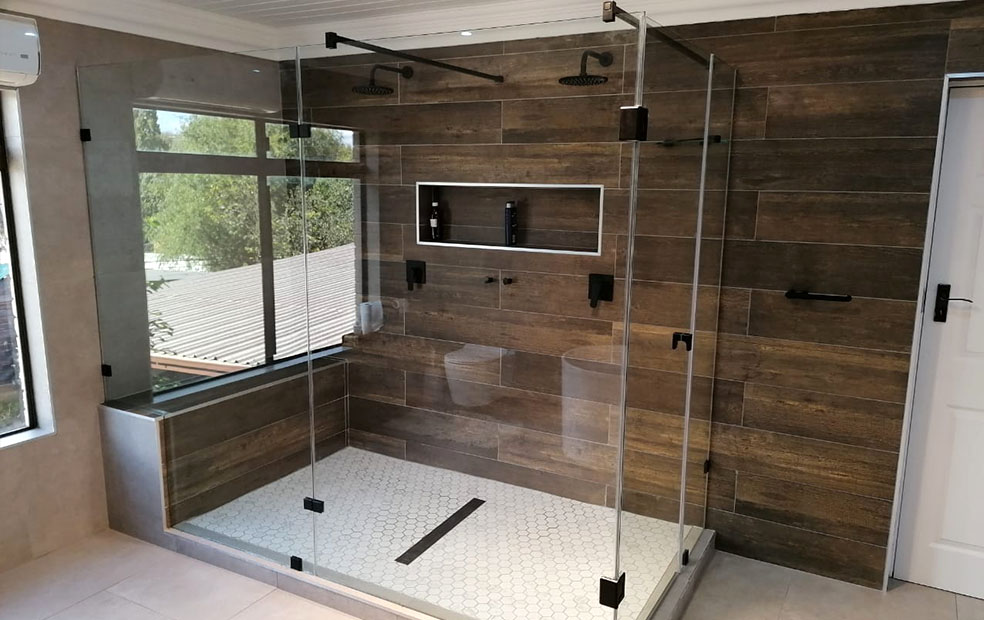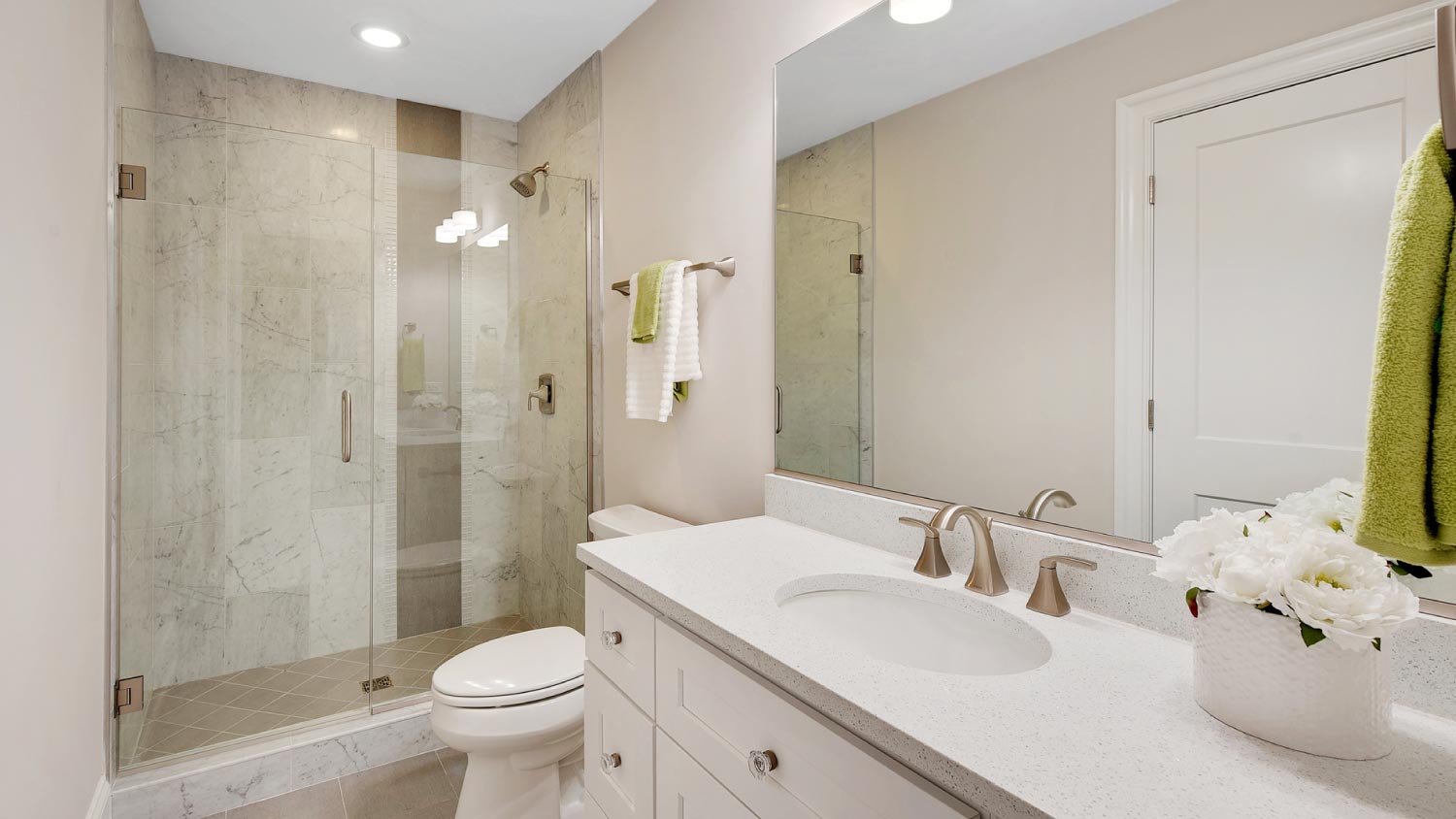Setting Up a Bathroom Unit Efficiently: What You Need to Know
Setting Up a Bathroom Unit Efficiently: What You Need to Know
Blog Article
We have noticed the article relating to How to Build a Shower Enclosure for Your DIY Bathroom directly below on the net and believe it made perfect sense to write about it with you over here.

A successful shower installment requires cautious preparation as well as a great deal of work. For the most part, you will need to do 3 types of tasks: framing wall surfaces, setting up the plumbing, as well as finishing walls.
Different Kinds Of Shower Units
A Lot Of Typical Blunders
Prep work.
Firstly, you have to select the type of shower that you desire to install. It is important to identify whether the selected shower can dealing with certain systems and can manage a secure level of water via the boiler. Many shower systems nowadays are developed to be adaptable to different water pressures (such as saved warm water and chilly mains).
It is likewise vital to take into consideration the water pressure and the preparation of the piping and water drainage for the shower.
Method.
Relying on the type of shower you want to install, the shower head should either be suited order to prevent its contact with the water in the bathroom below or the base tray, or it needs to have a check shutoff.
Before starting, it is advisable to note the placements of the shower head and control, as well as to intend the pipe-work involved. Furthermore, the drainage system to remove the waste water will need to be prepared. Both settings of the wire route and the shower button will additionally need to be considered if an instant or electrical shower system is being installed.
Use the guideline overview provided with the shower system to fit the shower control.Before suitable the pipelines that will supply the water to the shower system, it is very important to remove the water system. In order to secure the pipelines, they need to be provided a water resistant covering as well as likewise fitted with isolating valves. The pipelines can after that be buried right into the wall and also smudged over to neaten the general appearance.
Fit the base tray, shower head, and also fittings.
Connect the main shower control to the pipelines that will certainly be supplying the water (This may call for a women screw string adapter).
Reconnect the water and also examination the pipes for any leakages, as some might need firm.
If you are mounting an electric shower, keep in mind to switch off the electricity supply prior to making any electric connections. As soon as these connections have been made (there should be advice within the user's manual), the power supply can be switched back on.
Readjusting Water Pressure to Fit Your Shower.
The cold water reservoir can be raised to a greater height (sometimes just 150mm (6inches)) by fitting a solid wooden assistance beneath it - possibly composed of struts and also blockboards. If you choose this option, the primary and circulation pipes will certainly likewise have to be elevated to meet the brand-new height of the reservoir.
Alternatively, a booster pump (a solitary pump or a dual/twin pump) can be fitted. Whichever kind is picked, it has to be attached right into the power supply in order to operate.
Piping and Drainage.
It is best to make use of 15mm diameter supply pipelines, as well as make the runs to the shower as short and straight as feasible so as to preserve maximum stress and reduce heat loss. In addition, by minimising making use of arm joints for pipeline corners, you can lower the resistance in the flow of the water supply. You can accomplish this by flexing the pipes rather.
Most Popular Shower Enclosure Options to Upgrade Your Bathroom
Frameless Shower Enclosures
Switching to a frameless shower enclosure can instantly add a modern feel to your bathroom. This type of shower enclosure eliminates the visual obstruction of frames, providing a seamless flow using fully customisable glass.
Since they are fully customisable, it fits all sizes and shapes of your bathroom space. You can also design it in a way suitable for an expansive spa shower.
In-line Shower Options
Another popular shower enclosure option you can use to upgrade your bathroom is an in-line shower. This type of shower installs a shower glass in-line with an adjacent wall, keeping water within the shower area.
You can have two options for in-line showers: hinged doors and sliding doors. An in-line shower with hinged doors allows you to have one glass shower door mounted on one side and open the door outwards. Meanwhile, in-line showers with sliding doors will enable you to save space but are more expensive.
Semi-Frameless Shower Enclosures
The semi-frameless shower enclosure is also an excellent shower enclosure option as it reduces the possibility of mould. Since the glass door is frameless, there’s no way soap and water will be stuck on it. But to ensure that there’s no way for mould to flourish in your bathroom, choose frameless shower enclosures instead.
Semi-frameless shower enclosures are the ideal choice if you adore the design of frameless showers but would prefer a more affordable solution. These types of shower enclosures have a range of options available by the glass manufacturing process in accordance with various height specifications.
You can also customise this type of shower enclosure. However, your options might be limited because of the standard sizes and heights.
Glass Block Shower Enclosure
If you don’t want a bathroom door and walk-in glass shower enclosures are not an option either, a glass block shower enclosure is for you. Glass blocks will allow your bathroom to access maximum daylight while having the privacy it offers. Also, glass block enclosures might require a bit more effort to clean than other enclosures, but they are durable and versatile options.
You can also be creative when using glass blocks for your bathroom. Since this type of shower enclosure is made of small glass blocks, you can easily create a unique shower enclosure shape. There are many options for thickness, styles, and colours, too.
Final Thoughts
Upgrading your bathroom with a new shower enclosure is a great way to add value to your home. Not only will it appear nice, but it will also be more functional and efficient. When choosing a shower enclosure, pick one that fits the style of your bathroom and your budget. It’s also paramount to take note of the pros and cons of each type before installation to ensure you don’t miss anything important.
https://gharpedia.com/blog/shower-enclosure-to-upgrade-bathroom/

I ran across that article on How to Install a Freestand when exploring the search engines. For those who liked our page kindly make sure you remember to pass it around. Many thanks for taking the time to read it.
Ready to help! Report this page